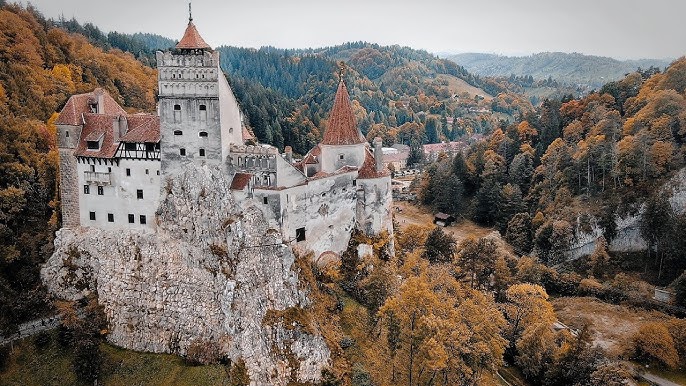Bran Castle, Romania: A Fascinating Journey Through Myth, History, and Gothic Splendor

Introduction:
Perched atop a rocky hill in the heart of Transylvania, Bran Castle emerges like a medieval fortress from the pages of a fairy tale, casting its imposing silhouette against the picturesque landscape of the Carpathian Mountains. Renowned as the legendary residence of Count Dracula, Bran Castle holds a special place in the imagination of travelers and vampire enthusiasts alike. Yet beyond its association with the iconic fictional character, the castle boasts a rich and storied history that spans centuries of medieval intrigue, royal patronage, and cultural heritage. In this extensive article, we embark on a captivating journey through the labyrinthine corridors and shadowy chambers of Bran Castle, unraveling the layers of its historical significance, architectural grandeur, and enduring allure as one of Romania’s most iconic landmarks.
Historical Background:
The history of Bran Castle is shrouded in mystery and legend, with its origins dating back to the 14th century when it was constructed by the Saxons of Brasov to defend the strategic mountain pass against invading armies. Over the centuries, the castle served various purposes, including a military stronghold, a customs checkpoint, and a royal residence. It was not until the 19th century, however, that Bran Castle gained international fame as the inspiration for Bram Stoker’s classic novel, “Dracula.”
Architectural Grandeur:
Bran Castle is a masterpiece of medieval architecture, blending elements of Gothic, Renaissance, and Baroque styles to create a truly unique and imposing fortress. The castle’s rugged stone walls, soaring towers, and intricate battlements evoke a sense of timeless grandeur and mystery, transporting visitors back to a bygone era of knights, kings, and legends. As one explores the castle’s labyrinthine corridors, secret passages, and ornately decorated chambers, it’s easy to imagine oneself in the midst of a medieval adventure, surrounded by tales of heroism, romance, and intrigue.
One of the most striking features of Bran Castle is its central courtyard, which serves as the heart of the fortress and offers panoramic views of the surrounding countryside. Here, visitors can admire the castle’s formidable defenses, including its imposing gatehouse, fortified walls, and defensive towers, while soaking in the breathtaking beauty of the Transylvanian landscape.
Cultural Heritage:
Beyond its association with the Dracula legend, Bran Castle holds immense cultural significance as a symbol of Romania’s rich heritage and historical legacy. Over the years, the castle has served as a royal residence, a museum, and a cultural center, attracting visitors from around the world who come to marvel at its architectural splendor and explore its vast collections of art, artifacts, and historical memorabilia.
Today, Bran Castle is managed by the Romanian government and has been transformed into a popular tourist destination, offering guided tours, educational programs, and special events that celebrate the castle’s rich history and cultural heritage. From medieval reenactments and art exhibitions to wine tastings and music festivals, there’s always something exciting happening at Bran Castle, making it a must-visit destination for travelers of all ages and interests.
Conclusion:
In conclusion, Bran Castle stands as a testament to the enduring allure of myth, history, and Gothic splendor. From its medieval origins to its association with the Dracula legend, the castle continues to captivate the imagination of visitors from around the world, offering a tantalizing glimpse into the rich tapestry of Romania’s cultural heritage. As we wander through its ancient halls and steeped in its timeless atmosphere, we are reminded of the power of storytelling, the magic of history, and the enduring legacy of one of the world’s most iconic landmarks. Bran Castle truly is a destination like no other, where the past comes alive, and legends are born anew.




